A brisket takes around 10-15 hours to prep and cook. So if you want to serve it fresh at lunchtime, you can either start cooking at midnight or partially cook it the day before and finish later, closer to when it needs to be served.
The question here is whether the second choice: cooking meat in two stages, will still give you tender, crispy, and juicy beef?
Note: When cooking a brisket, allow at least one and half hours of cooking time per pound of meat.
In short, yes, you can partially cook a brisket and finish it later, right before you need to serve it, as long as the internal temperature of the brisket has reached 160°F (71°C). Once the internal temperature has reached, remove it from the heat; once cool enough, wrap it well and refrigerate. Ensure you don’t leave the meat out for more than 2 hours.
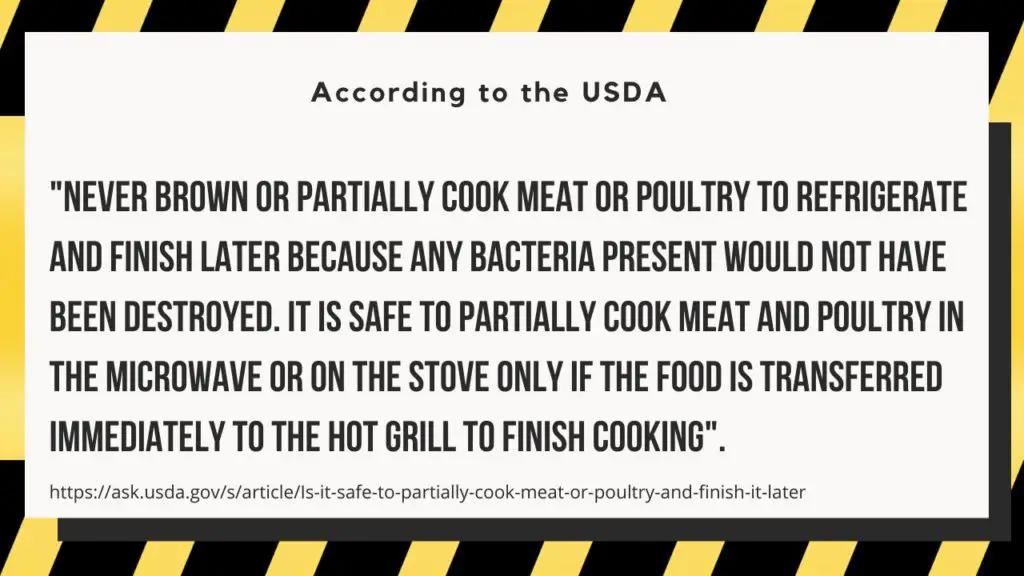
However, when you resume cooking later or reheating, your brisket will lose some of its moisture, and the bark will soften between the time you stop and restart cooking. So, for crusty outer layer and tender, juicy, and deliciously smoky meat, an unbroken overnight cook is best if you want to serve a brisket for lunch.
If you absolutely can not do continuous overnight cook, in this article, I will give you some cooking techniques that will help you save some time and still achieve the best possible result given your circumstances. So keep reading.
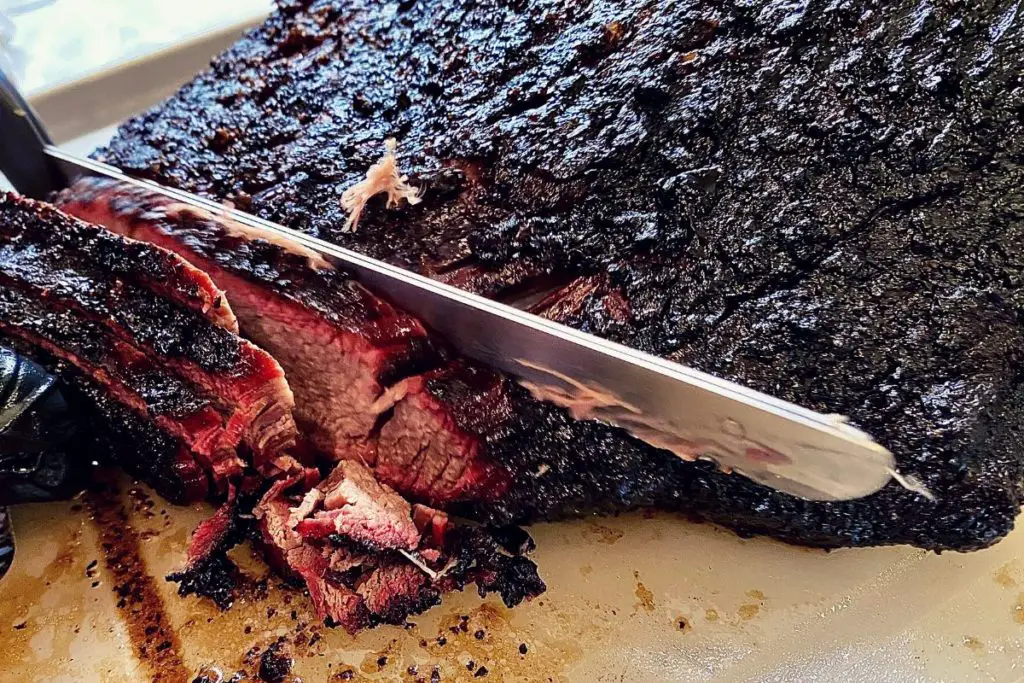
Bark is the flavorful, crispy, external crust that covers the brisket. This bark is a result of the meat being dry-rubbed with spices and smoked for an extended period of time. This crust made up of rendered fat, spices, and meat juices is what gives brisket its characteristic flavor and texture.
Why Does Cooking Brisket Take So Long?
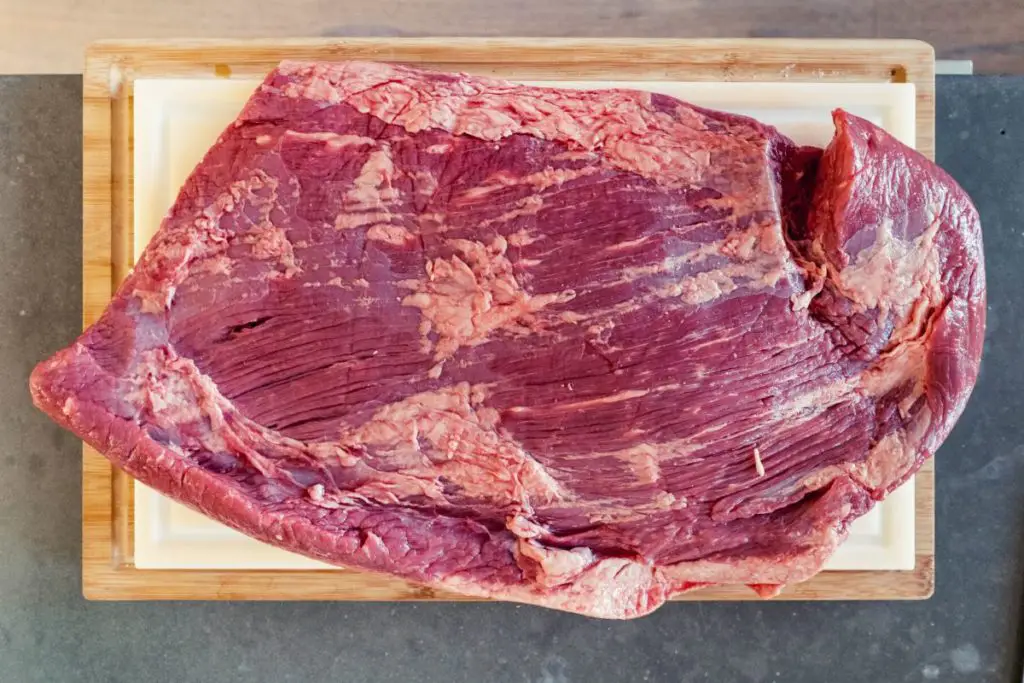
To understand why this primal cut takes so long to cook, you must be familiar with how the connective tissue in the brisket functions.
Meat consists of four things:
- Water
- Fat
- Muscle tissue
- Connective tissue
The last one is responsible for a brisket’s incredibly long cooking time.
Brisket comes from a cow’s breast or upper chest. These muscles are worked a lot and harden over a cow’s lifetime. Since they have a lot of white fibrous tissue of which collagens are the main structural component, the meat is hard to chew and cut if not cooked slowly over a long period.
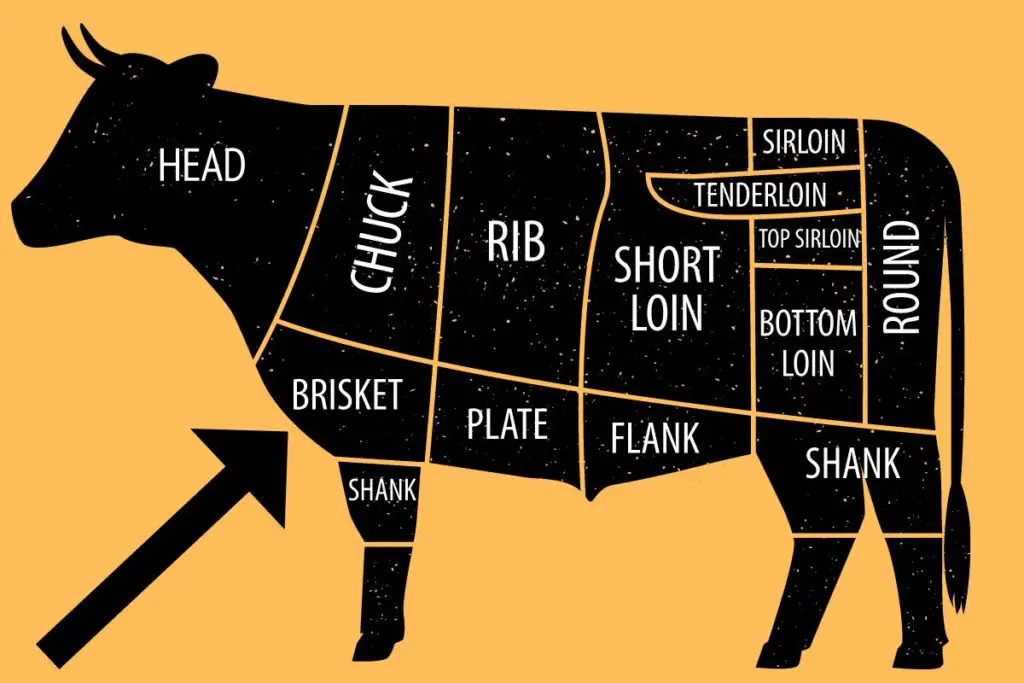
When cooked for an extended period, collagen begins to soften and turns into soft gelatin.
But this takes time, moisture, and heat.
Even if just one of these factors is inadequately applied means, you’ll end up with dry or rubber meat that may taste great but is a pain to chew down.
Therefore, whether you are braising, stewing, smoking, or slow cooking, 10 lb (4.5 kg) brisket needs to be cooked for about 10 -15 hours with constant supervision to ensure there is enough moisture and that the cooking temperature is right.
Even when you’re done with the cooking part, you must let your brisket rest for an hour before slicing or shredding the meat.
This is where people start wondering whether they can split this long and strenuous task over two sessions, especially when the meat has to be served at lunchtime.
Read Also: The 4 Best Cheap Cuts Of Beef For Slow Cooker Stew.
Effects Of Cooking a Brisket In Two Stages
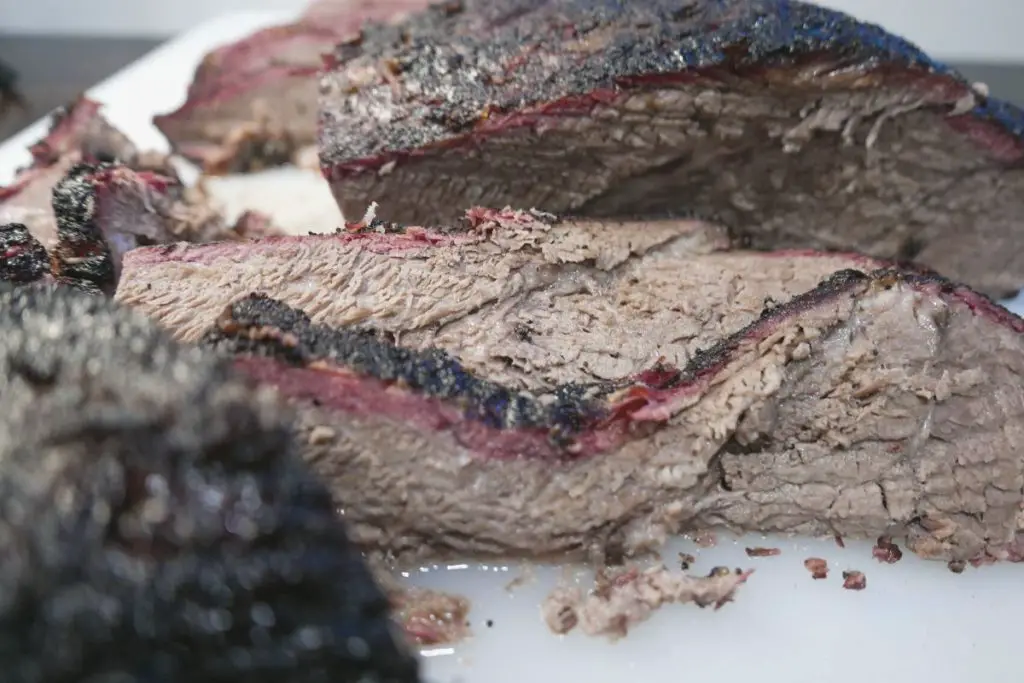
When cooking meat in two stages, it is safe to remove it from the heat once the internal temperature has reached 160°F (71°C) and place the brisket in a fridge until you are ready to continue cooking.
But generally, it is not best to reheat or cook the meat twice because reheating meat can affect it on molecular and cellular levels and won’t give you as moist and succulent texture as you would when with a continuous overnight cook.
Also, the humidity in your refrigerator can soften the bark and can make it wet and soggy.
When cooking brisket in two stages, for the best result, transfer it from the smoker straight to the oven as explained below.
Ways To Save Time When Cooking a Brisket
Although I don’t recommend partially cooking a brisket and then returning to it later, I do have some other tips to reduce the cooking time.
I would suggest that you do all non-cooking-related tasks beforehand to save time. This primarily includes two crucial tasks:
- Seasoning the brisket in advance
- Trimming in advance
1. Season The Brisket In Advance
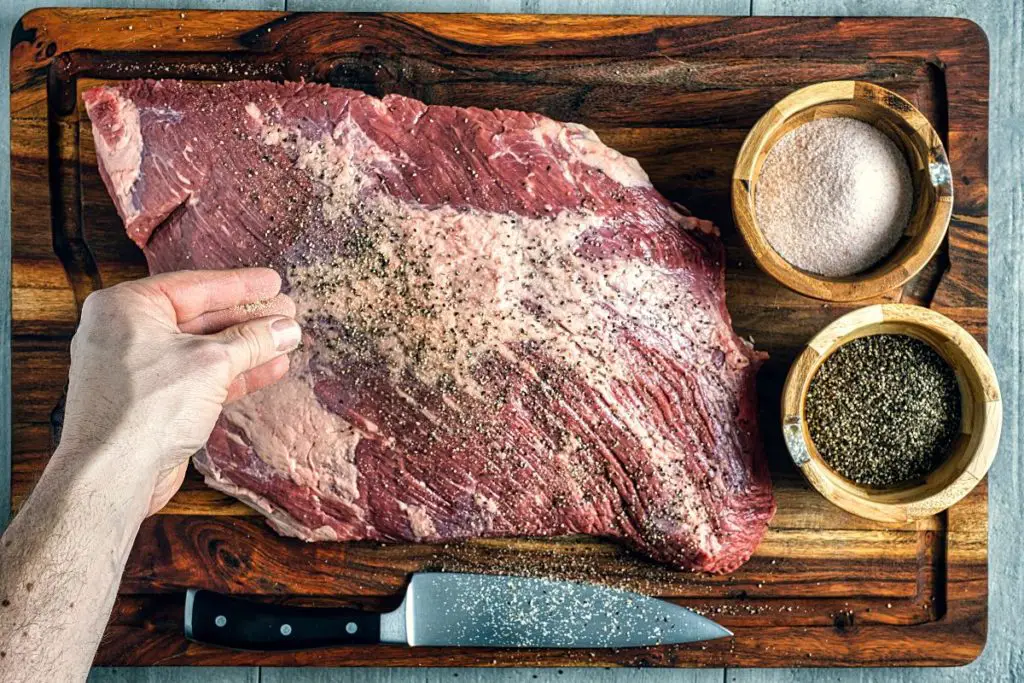
Briskets require a fair amount of seasoning to develop a nice crispy bark and a satisfying layer of flavor. In fact, people are far more likely to under-season than over-season.
My favorite combination is onion powder, brown sugar, salt, garlic powder, and black pepper. Your classic BBQ rub or anything balanced with spicy, sweet, tangy flavors works great. But some just prefer salt (kosher flake salt )and pepper.
So, before you cook the meat, generously coat your meat in seasoning.
You can do two things here:
First, you can either only prepare the shaker bottles with the relevant spices beforehand and rub them on the brisket at least an hour before cooking.
Or second, you can season and marinate your beef 12-24 before cooking. You can use vinegar, lemon or lime juice, or any other acid-based marinade, enhancing the tenderizing effect of smoking.
Doing one or both will split your time between preparation and cooking, making the entire thing easier for you.
2. Trim In Advance (optional)
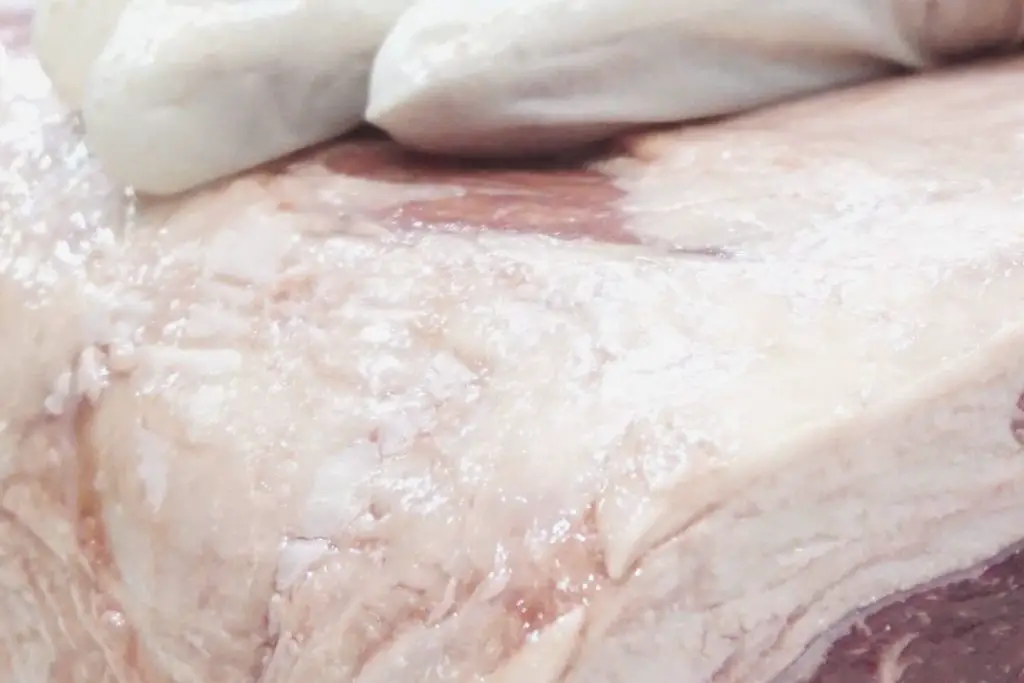
If your brisket has a thick layer of fat, you may want to trim it before cooking. Know that you can do this step in advance too. While trimming itself is a personal choice and entirely up to the individual, it can be helpful to prepare beforehand if you want to do it.
Whether or not you want to trim depends on you. However, if your brisket comes with a very thick layer of fat, trimming it off will help it cook more evenly and make it less greasy.
Also, the seasoning may not be able to penetrate the thick layer of fat, leaving the meat bland and tasteless.
I would recommend leaving about a ¼ inch of fat on your cut.
Now, if, for some reason or another, you can not complete the smoking process without stopping, leaving your brisket only partially cooked, then here are some ideal two-stage brisket cooking instructions:
Read Also: Leaving An Oven On Overnight – Important Safety Precautions!
Frequently Asked Questions
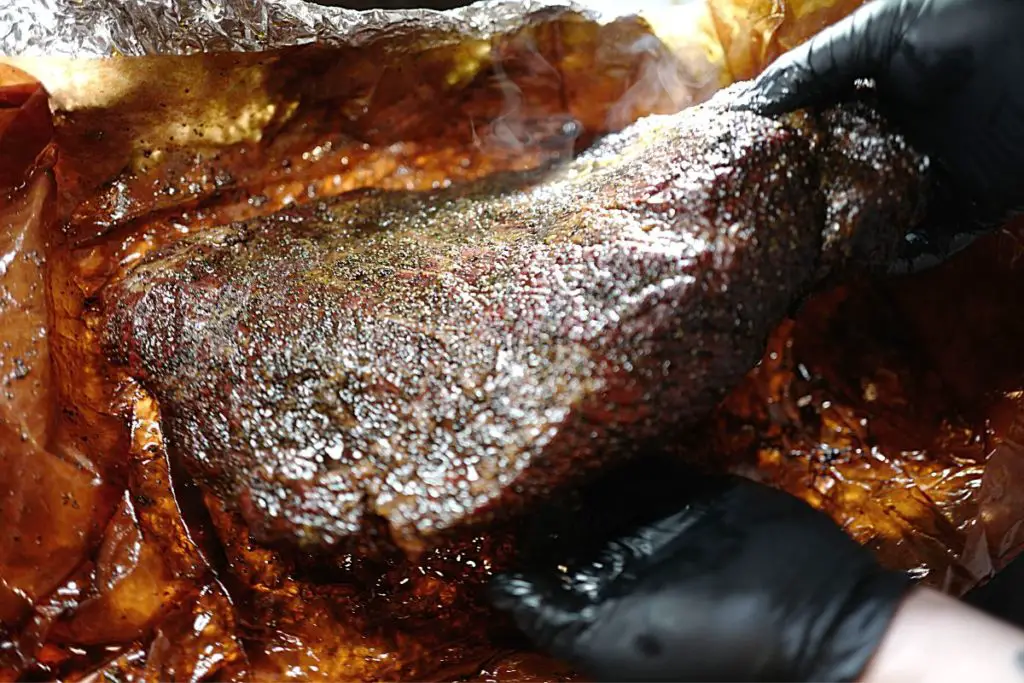
Can you cook brisket in a slow cooker?
Cooking the brisket in the slow cooker gradually breaks down the connective tissue in the meat, resulting in moist and fall-apart-tender brisket. It is the easiest and completely hands-off method to cook this tough cut of meat. Place the brisket in the slow cooker, season it with salt and pepper, and add a few cups of water. Add some potatoes, carrots, and onions, and cook for about 8 hours on a low setting.
How long to let the brisket rest in foil?
When it comes to cooking brisket, one of the most critical steps is letting it rest after it’s cooked. Once cooked, remove it from the heat, unwrap it from the foil or wax paper and leave the brisket on the cutting board to rest. Most people recommend letting the brisket rest for at least one hour, but I find that 1 hour and 30 minutes is ideal. Although it is best to let it rest unwrapped, you can just loosely cover it with foil.
Why do briskets need to rest?
If you were to cut into brisket right after it was cooked, the juices would run out, and the meat would be dry. When you let the meat rest, the juices would redistribute back into its fibers, cool down, and thicken so they would stay in the meat and not run out when cut.
How long to smoke a brisket at 200°F?
The ideal smoking temperature for brisket is around 225°F (107°C). At that temperature, 5-pound brisket would take about 7-8 hours to cook, ensuring that collagen melts and meat is cooked evenly without becoming dry or tough. When smoking brisket at 200°F (93.°C), you need to extend the cooking time to about 3-4 hours to get the same result.
What temperature is too high for brisket?
The ideal temperature range for smoking brisket is 225°F-250°F (107°C-121°C). Although you can save time on cooking by increasing the temperature, you have to take an extra cake to prevent the meat from drying out and becoming tough. Cooking temperature over 325°F (162°C) is generally too high for brisket.
What temp to finish brisket in the oven?
When finishing a brisket in the oven, the recommended temperature is 225-250°F. However, if you want to finish the brisket more quickly, you can increase the oven temperature to 325°F but don’t exceed 300 degrees as it will likely become burnt or tough, and some harmful chemicals (HCAs and PAHs) may start to form.
Read Also: How To Cook Freezer Burned Meat? (Without Ever Being Noticed).
In Conclusion
If you need to cook a brisket for a gathering but don’t have enough time to do it all at once, you can partially cook a brisket and finish it later. Ensure the internal temperature reaches 160°F (71°C) to prevent foodborne illness.
When cooking meat, it is important to ensure that it reaches a safe minimum internal temperature in order to avoid foodborne illness. The best way to do this is to use a food thermometer to check the temperature of the meat.

